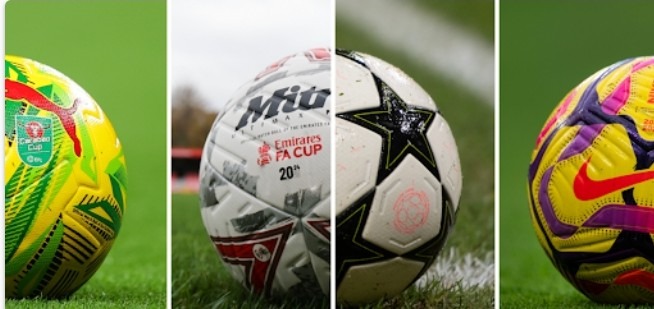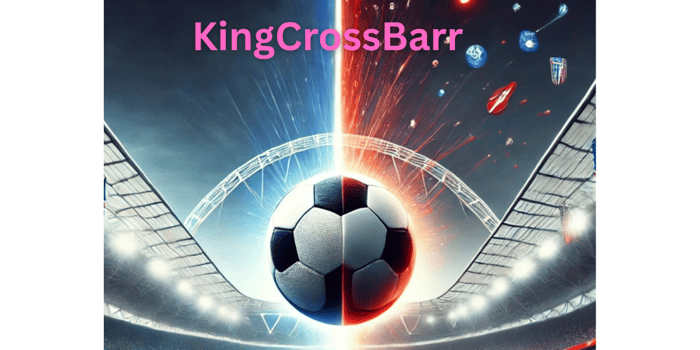Nike vs Adidas Football: Impact on Players & Game
Explore the unique aerodynamics, weight, and feel of Nike and Adidas footballs. Discover how these differences impact players and the game itself. Learn more about football technology!
3/3/20254 min read


Why Do Different Football Competitions Use Different Balls? ⚽️🤔
Football is a beautiful game, but have you ever noticed how the ball changes depending on the competition? 🤯 One day, you’re watching a Premier League match with a Nike ball, and the next, the Champions League is rolling with an Adidas ball.
Recently, Pep Guardiola and Mikel Arteta have criticized different match balls in England’s domestic cups. Guardiola called the FA Cup’s Mitre ball "not right" and "difficult to control", while Arteta had similar concerns about the Puma ball used in the Carabao Cup.
But why do different competitions use different balls? 🤷♂️
And do they really make a difference in the game? Let's find out!
Who Supplies Which Balls? 🎾🤝
Each football competition has exclusive deals with different ball manufacturers. Here's a breakdown of the major leagues and their official match ball suppliers:
🔵 Premier League → Nike ✅ (Supplier since 2000, but Puma will take over in 2025!)
🔵 Championship (EFL) → Puma ✅
🔵 FA Cup → Mitre ✅
🔵 EFL Cup (Carabao Cup) → Puma ✅
🔵 Champions League → Adidas ✅ (Extended until 2027!)
🔵 Europa League → Kipsta (Decathlon) ✅
🔵 Europa Conference League → Decathlon ✅
🔹 Nike has dominated the Premier League since 2000, and will continue until 2025-26, when Puma takes over.
🔹 Puma provides balls for the entire English Football League (EFL), which includes the Championship, League One, and League Two.
🔹 Adidas has controlled the Champions League ball since 2001, and recently extended their contract until 2027.
Each competition chooses a different ball supplier based on technology, sponsorship deals, and financial agreements. But do these balls actually make a difference? 🤨
How Different Can Two Balls Be? 🎯🏆
You might think all footballs are the same, but they’re not. Looks can be deceiving! 👀
Every official match ball must comply with FIFA’s ‘Laws of the Game’, set by the International Football Association Board (IFAB). These rules ensure:
✔️ The ball must be made of suitable material (usually polyurethane, rubber, polyester, and cotton).
✔️ The circumference must be between 68 cm and 70 cm.
✔️ The weight must be between 410g and 450g at the start of the match.
✔️ The pressure must be between 8.5 psi and 15.6 psi at sea level.
These specifications apply to all professional competitions worldwide. But here’s where things get interesting: the way the ball is designed can still impact its flight, speed, and control. 🚀
Comparing Match Balls ⚖️
Let’s break down some major footballs used in different competitions:
🔥 Nike Flight (Premier League)
✅ Technology: AerowSculpt grooves for a truer flight.
✅ Material: Polyurethane, rubber, polyester, cotton.
✅ Performance: Designed to reduce drag and improve accuracy.
🔥 Puma Orbita 1 (EFL Cup & Championship)
✅ Technology: Fewer seams and larger panels for better ball control.
✅ Material: High-performance synthetic materials.
✅ Performance: Helps with power shots and dribbling precision.
🔥 Adidas Champions League Ball
✅ Technology: Thermally bonded panels for seamless aerodynamics.
✅ Material: Uses bio-based substances like sugarcane and wood fibers.
✅ Performance: Designed for speed and unpredictable swerve.
Each manufacturer focuses on different elements, which can impact how a player strikes the ball, controls it, and even how goalkeepers react.
Do These Balls Actually Affect Performance? ⚽️🎯
The short answer: Yes! Different match balls can significantly change how the game is played.
Key Factors That Affect Performance:
🌀 Aerodynamics – Grooves and seams affect how the ball moves through the air.
💨 Weight & Material – Lighter balls travel faster and swerve more.
🔄 Bounce & Spin – Some balls are designed for more controlled bounces.
Players have noticed these differences! 🎙️ Cristiano Ronaldo, Lionel Messi, and Kevin De Bruyne have all commented on how different balls feel when passing, shooting, or dribbling.
💬 Cristiano Ronaldo on Jabulani (2010 World Cup ball):
"This ball is unpredictable! It moves too much in the air."
💬 Kevin De Bruyne on Nike Flight:
"This ball is fantastic for passing. The flight is much more stable."
💬 Lionel Messi on Adidas Champions League Ball:
"It feels great on my foot, especially for dribbling and free kicks."
🚨 Controversy Alert! Even goalkeepers have strong opinions about different balls:
🧤 Gianluigi Buffon called the Jabulani “a disaster” for goalkeepers!
🧤 David de Gea has mentioned that some balls feel “too light” for shot-stopping.
Different balls force players to adjust their techniques, which can impact passing accuracy, shooting power, and even how goalkeepers save shots.
What Are Footballs Made Of? 🏗️⚙️
While the size and weight of footballs are regulated, the materials and construction can vary widely. Let’s break it down:
🔹 Outer Covering: Usually polyurethane (PU) or synthetic leather, designed for grip, control, and durability.
🔹 Inner Layers: Multiple layers of polyester, foam, or rubber to enhance shock absorption.
🔹 Bladder: The core of the ball, typically made of latex or butyl rubber, which affects air retention and bounce.
Technological Innovations in Footballs 🚀
Football manufacturers are always innovating to create better performance balls:
✅ Nike AerowSculpt – Uses 3D-printed grooves to stabilize flight.
✅ Adidas Smart Ball – Includes a microchip to analyze ball movement.
✅ Puma High-Energy Return Foam – Provides extra power when struck.
The future of footballs might include AI sensors to track data in real-time, helping referees with offside decisions, goal-line technology, and more!
Final Thoughts – Do Footballs Matter? 🏁🤯
Absolutely! The type of match ball
used in a competition affects everything – from how players pass and shoot to how goalkeepers make saves.
Key Takeaways 📌
✅ Different competitions use different balls due to sponsorship deals.
✅ Nike, Puma, Adidas, and Mitre dominate professional football.
✅ Ball design impacts flight, speed, control, and spin.
✅ Players and managers have openly criticized some match balls.
✅ Technological advancements are making footballs more precise than ever.
💭 What do you think? Should all competitions use the same ball, or do you like the variety? Drop your thoughts in the comments! 👇🔥
🔗 Stay Updated with Kingcrossbarr!
For more football insights, analysis, and trending stories, visit Kingcrossbarr.com. Don’t forget to follow us on social media for the latest updates! 🚀⚽️
